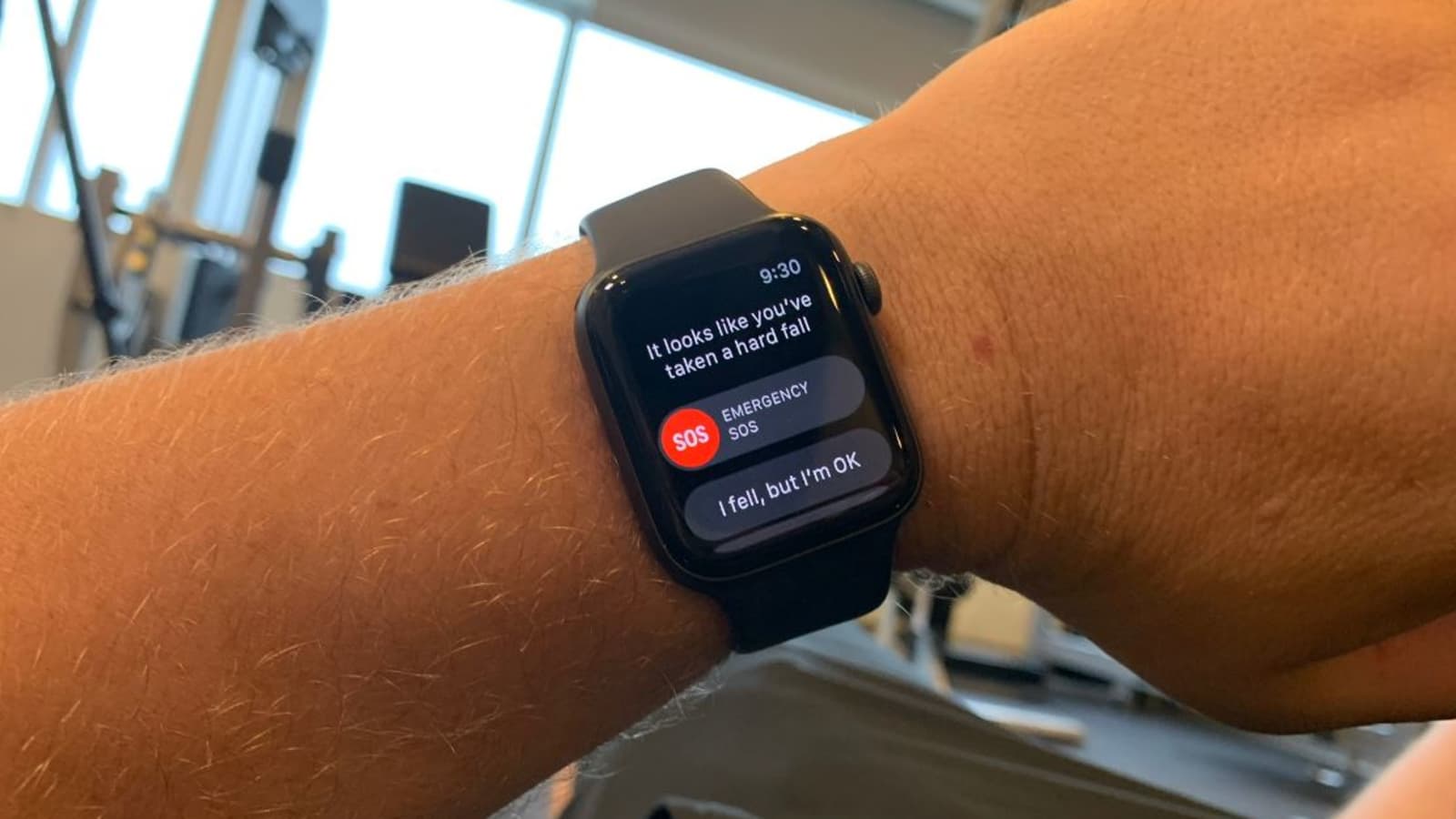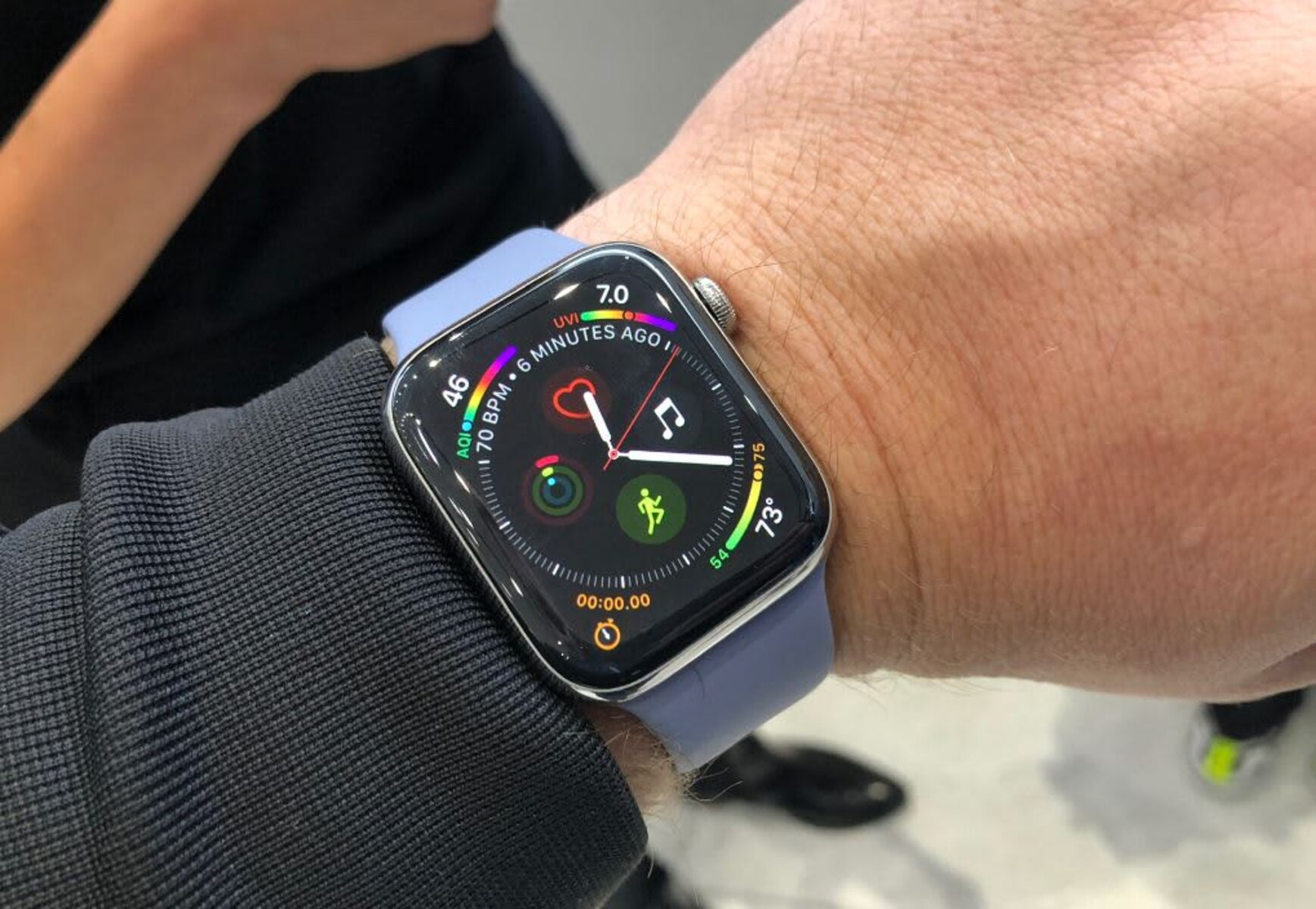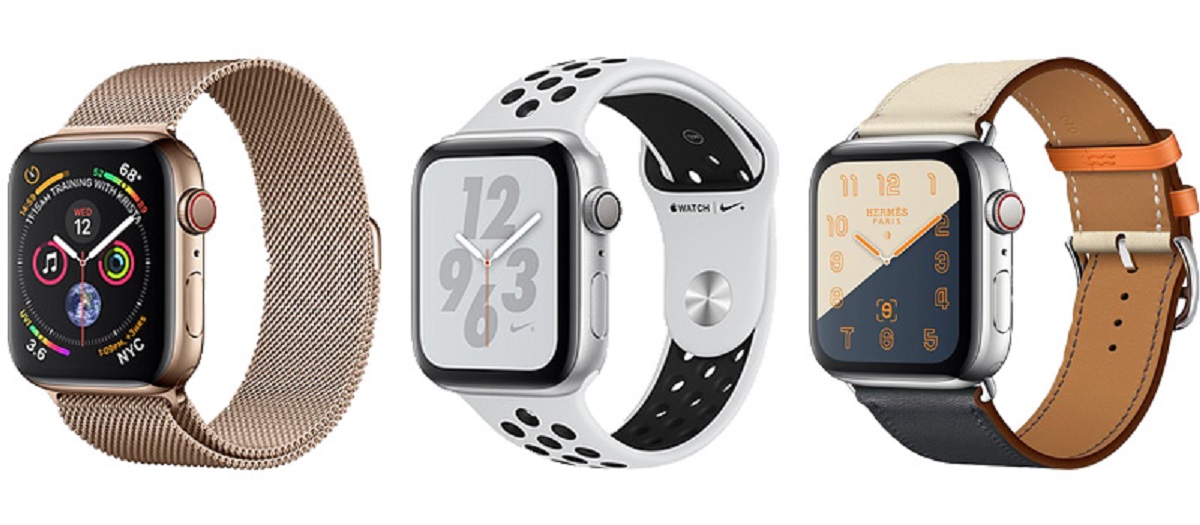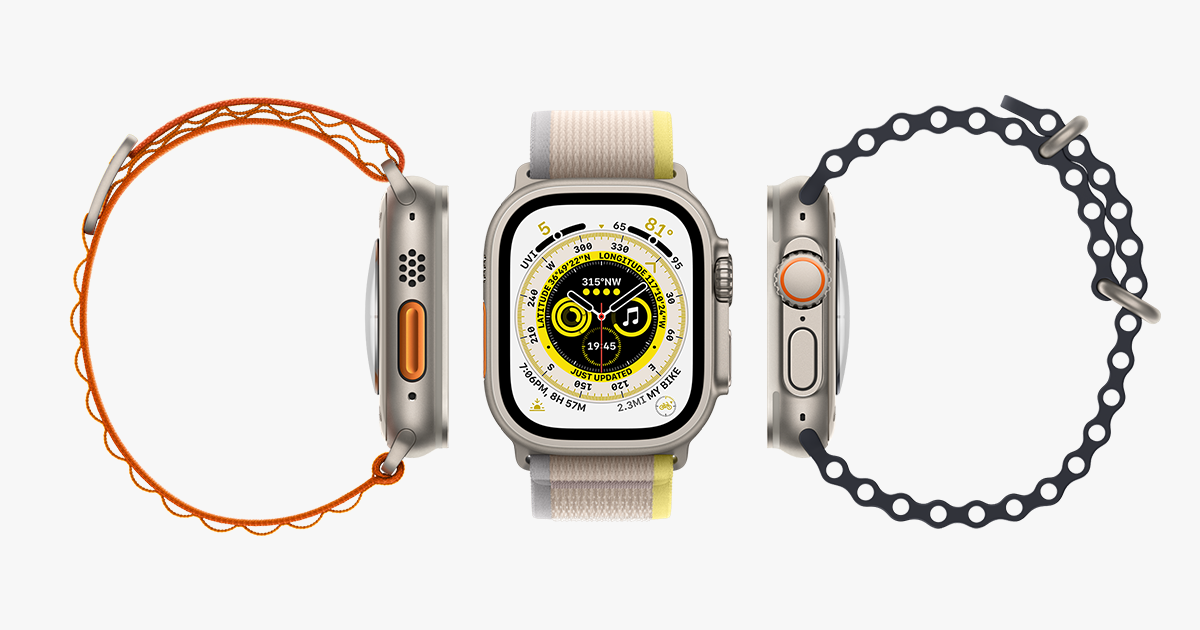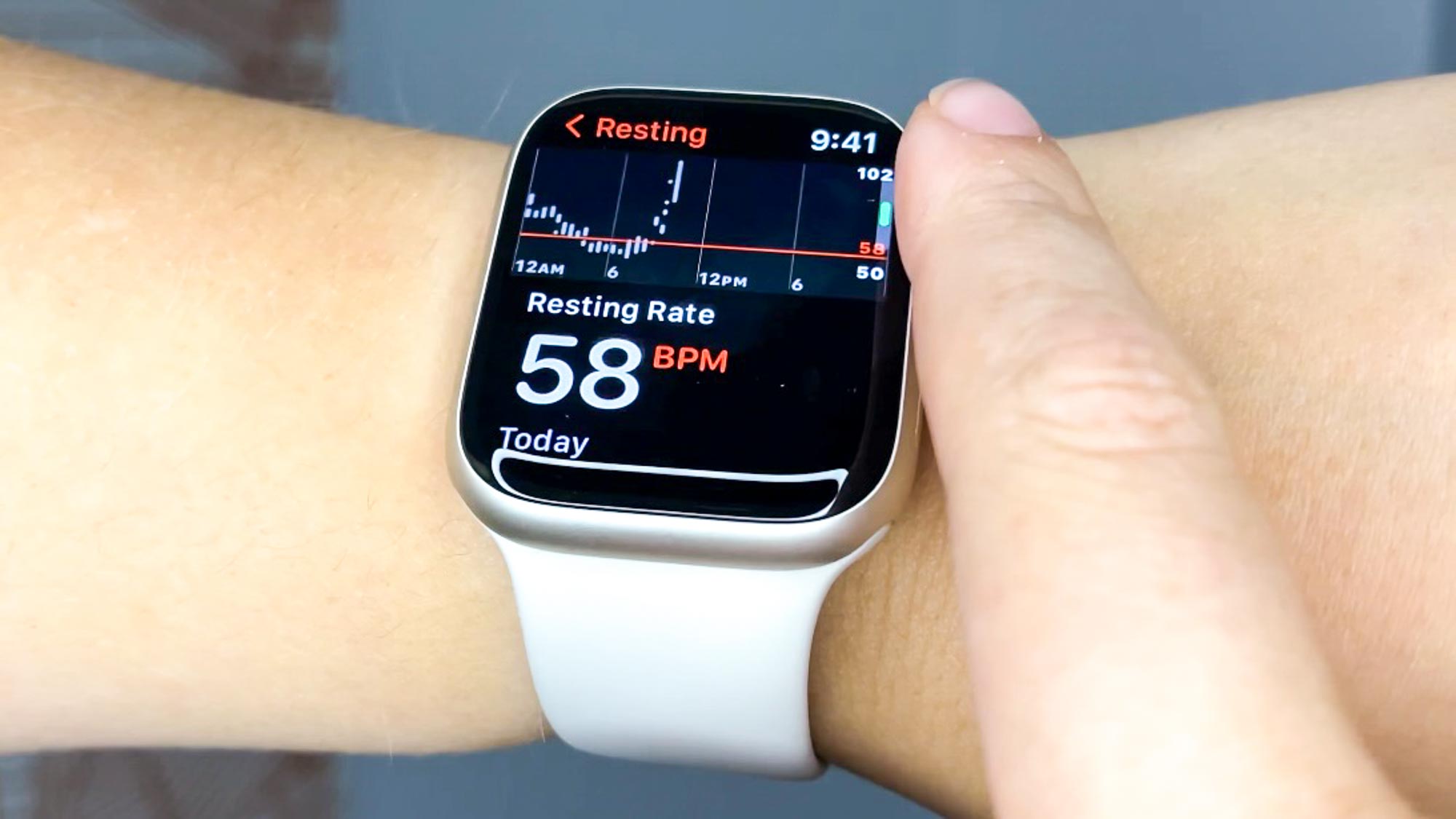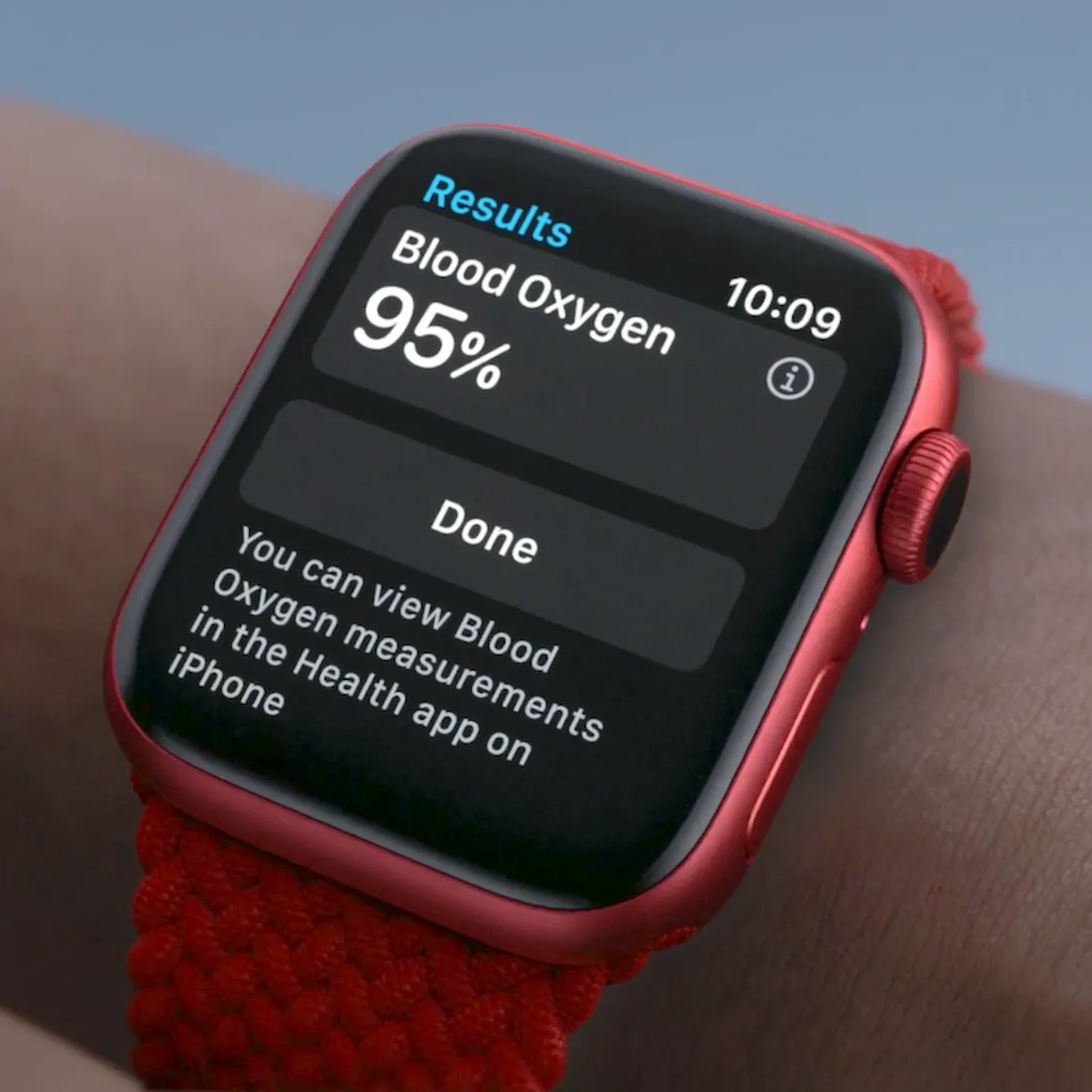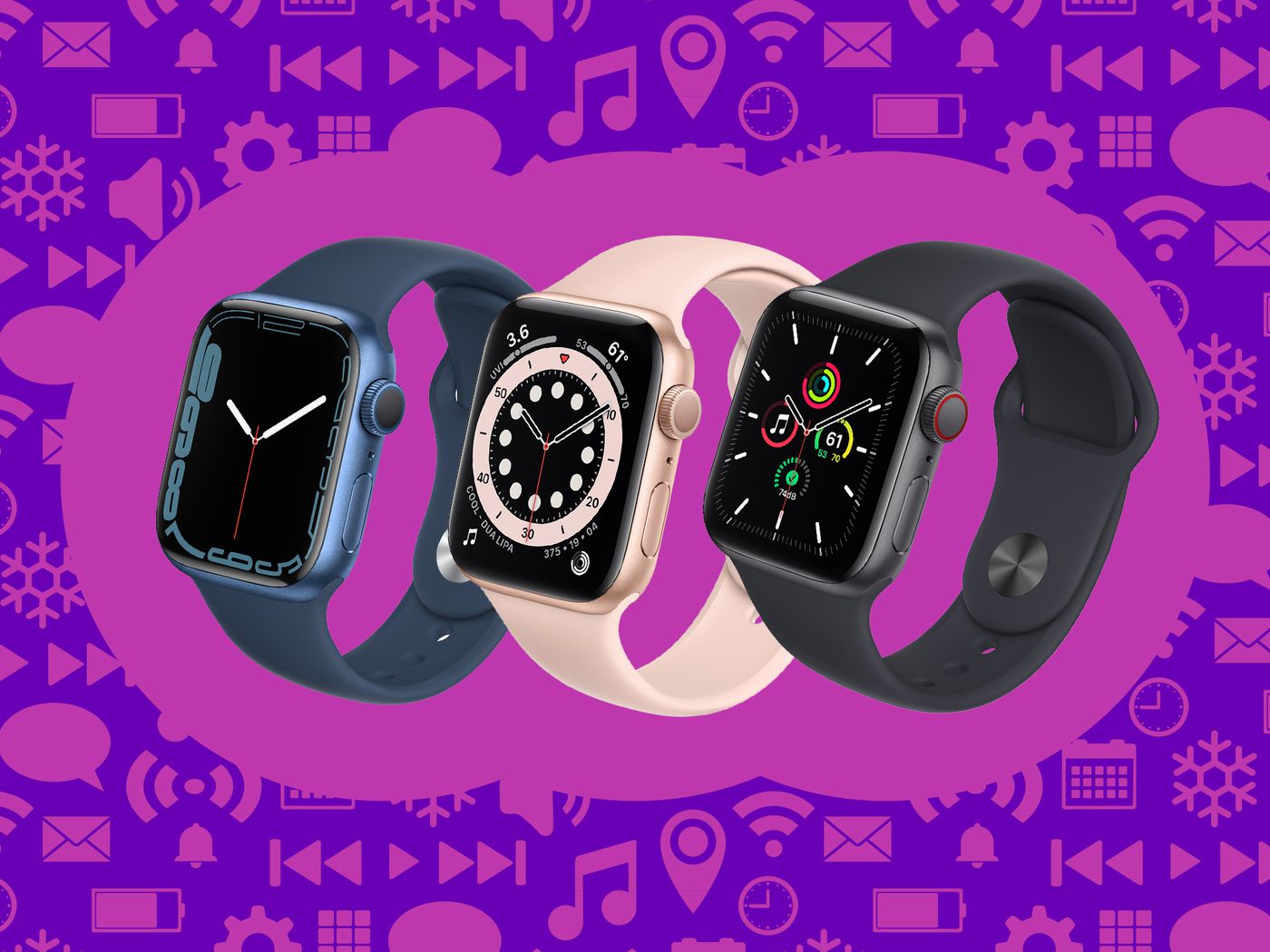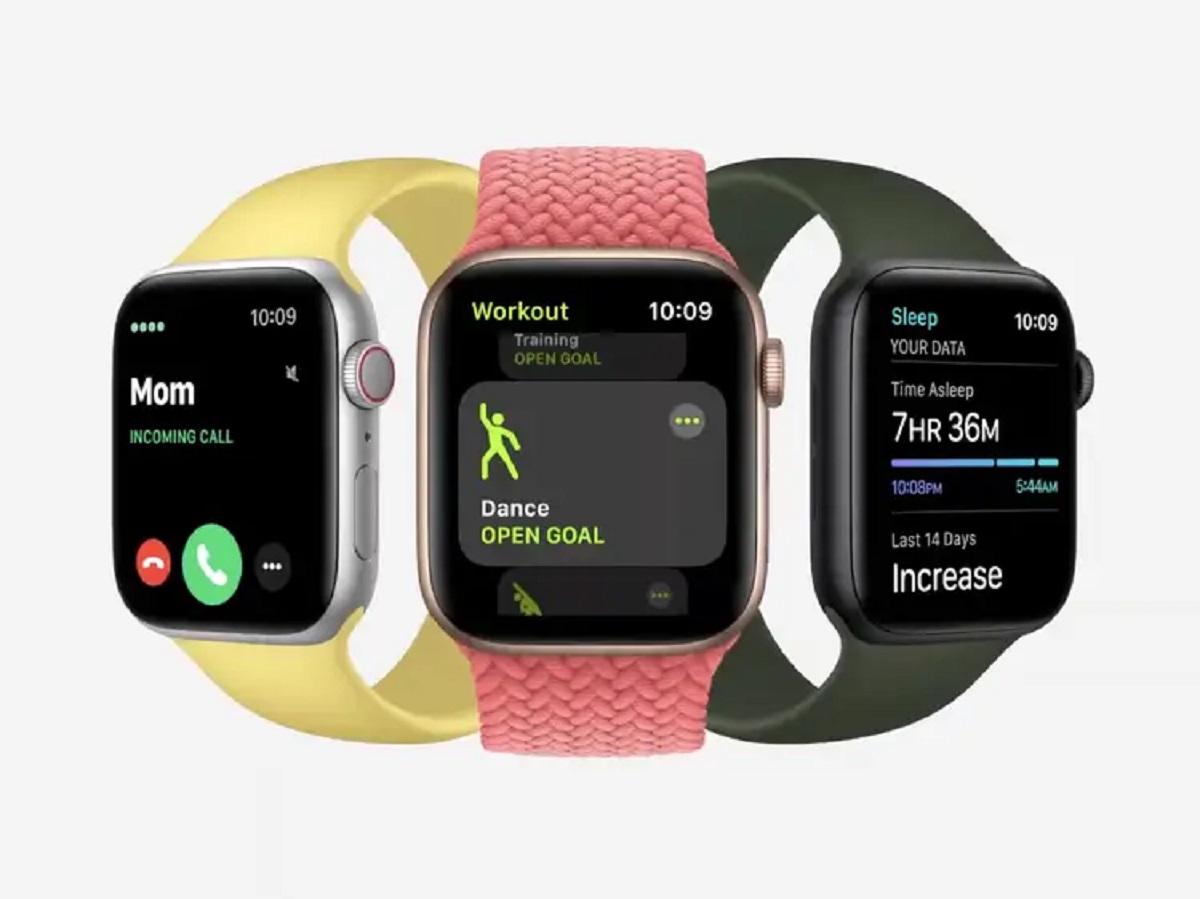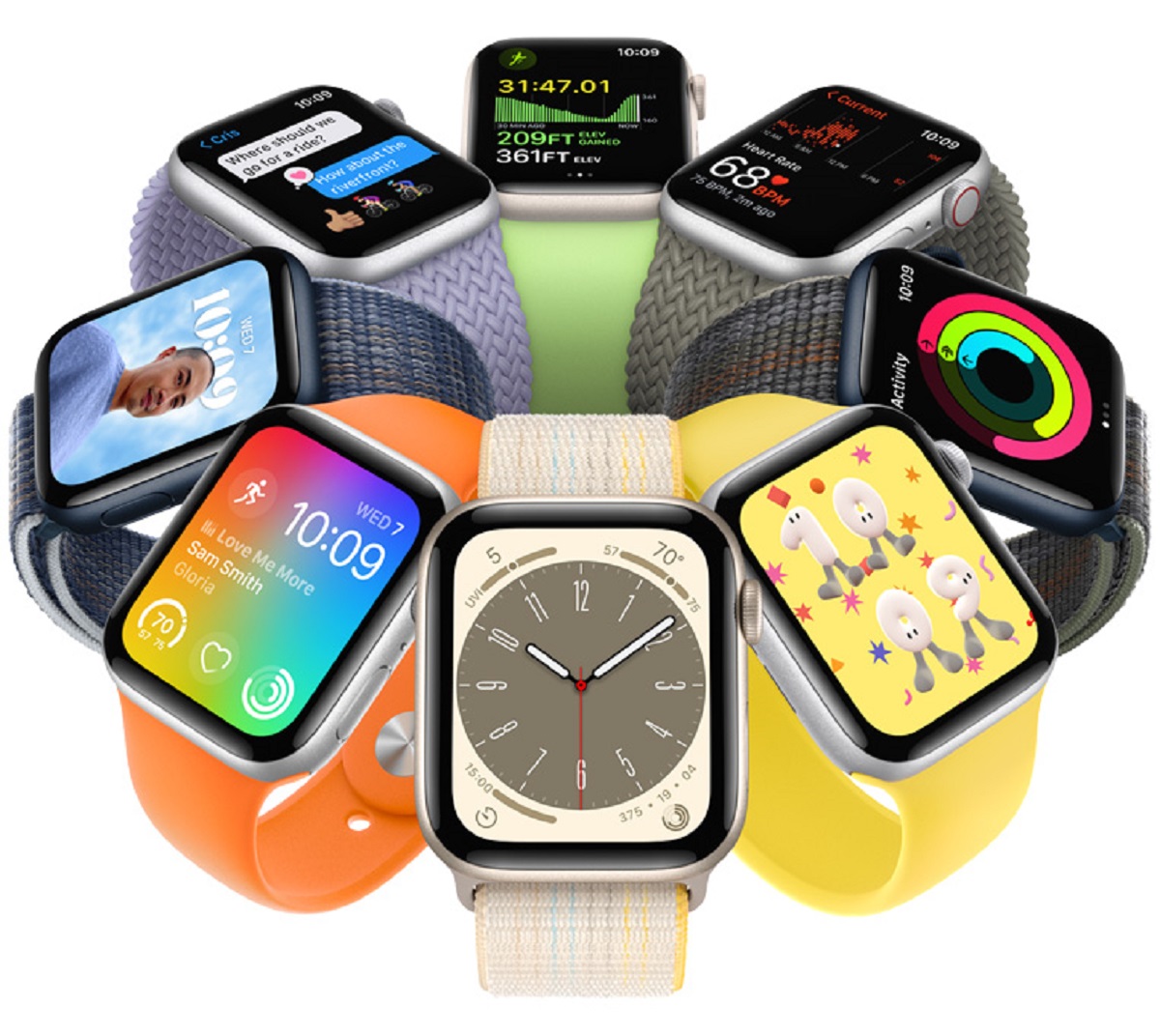Introduction
Falls are a leading cause of injuries, especially among older adults. According to the World Health Organization, approximately 646,000 individuals die each year from fall-related injuries, with millions more experiencing non-fatal falls. To address this issue, Apple has incorporated fall detection technology into its Apple Watch, a popular wearable device. This innovative feature is designed to detect when a user experiences a fall and initiate an appropriate response.
In this article, we will explore how fall detection works on the Apple Watch. We will delve into the sensors and algorithms employed, as well as the customization options available to the user. We will also consider the importance of fall detection and the potential limitations of this feature.
By understanding how fall detection functions on the Apple Watch, users can make the most of this invaluable capability to enhance their safety and well-being. So, let’s dive in and unravel the secrets behind fall detection on the Apple Watch.
What is fall detection?
Fall detection is a technology that enables devices to identify when a person experiences a fall and automatically initiates an appropriate response. It is particularly useful for individuals who may be prone to falls due to age, medical conditions, or other factors.
On the Apple Watch, fall detection is a feature that uses a combination of sensors and algorithms to detect when a user takes a hard fall. When the Apple Watch detects a fall, it sends a prompt to the user asking if they’re okay. If the user doesn’t respond within a specified period, the Apple Watch automatically calls emergency services and shares the user’s location.
This feature is designed to provide an added layer of safety and peace of mind for Apple Watch users, especially those who may live alone or engage in activities that pose a higher risk of falls.
It’s important to note that fall detection is not foolproof and may not accurately detect all types of falls. There may be instances where false positives or false negatives occur. However, despite these limitations, fall detection can still be a valuable tool in alerting others in the event of a fall and potentially saving lives.
Now that we have a general understanding of what fall detection is, let’s explore how it works specifically on the Apple Watch.
Why is fall detection important?
Fall detection is an important feature that can have a significant impact on the well-being and safety of individuals, particularly the elderly and those with certain medical conditions. Here are some key reasons why fall detection is important:
- Timely assistance: Falls can often result in injuries that require immediate medical attention. With fall detection technology, help can be summoned promptly, reducing the time it takes for assistance to arrive and potentially minimizing the severity of injuries.
- Peace of mind: Fall detection provides a sense of security, both for the individuals using wearable devices like the Apple Watch and for their loved ones. Knowing that there is a safety net in place can alleviate concerns and allow users to maintain their independence with greater confidence.
- Support for caregivers: Fall detection technology can be particularly beneficial for caregivers who may not always be with their loved ones. It provides an added layer of protection, ensuring that the caregiver can be alerted and take appropriate actions when a fall occurs.
- Identification of potential health issues: In some cases, a fall can be a symptom or an indication of an underlying health problem. Fall detection can prompt individuals to seek medical attention, leading to the early detection and treatment of conditions that might otherwise go unnoticed.
- Data collection for research: Fall detection technology on devices like the Apple Watch can contribute valuable data for research studies on fall-related injuries and prevention strategies. This data can aid in the development of more effective prevention programs and assist in identifying high-risk populations.
By recognizing the importance of fall detection, we can better appreciate the value it brings in terms of safety, peace of mind, and improved healthcare outcomes. Now, let’s delve into the specifics of how fall detection works on the Apple Watch.
How does fall detection work on the Apple Watch?
Fall detection on the Apple Watch utilizes a combination of advanced sensors and algorithms to detect when a user has experienced a fall. Here’s an overview of how the process works:
Sensors used for fall detection: The Apple Watch is equipped with multiple sensors, including an accelerometer and a gyroscope. These sensors continuously monitor the user’s motion and orientation in real-time.
Algorithm and machine learning: The Apple Watch’s fall detection algorithm analyzes the data from the sensors to identify a sudden and forceful movement that is characteristic of a fall. The algorithm has been trained using real-world fall data to accurately distinguish between a fall and other common movements.
Customizing fall detection settings: Users have the ability to customize fall detection settings on their Apple Watch. They can adjust parameters such as the sensitivity of the algorithm, which determines the threshold for detecting a fall, and the option to enable or disable fall detection entirely.
What happens if a fall is detected: When the Apple Watch detects a fall, it initiates a notification alert on the device. The notification gives the user an opportunity to indicate if they are okay or in need of help. If the user doesn’t respond within a specified period, the Apple Watch automatically contacts emergency services and shares the user’s location information.
While fall detection on the Apple Watch is designed to be highly accurate, it is important to note that false positives and false negatives can still occur. For example, intense physical activities or sudden movements unrelated to falls may trigger the algorithm. Additionally, certain types of falls, such as slow or low-impact falls, may be more challenging for the algorithm to detect.
Understanding how fall detection works on the Apple Watch empowers users to make informed decisions about enabling and customizing this feature based on their individual needs and preferences. In the next section, we will explore the sensors used in more detail to shed further light on the intricacies of fall detection on the Apple Watch.
Sensors used for fall detection
For fall detection to work accurately, the Apple Watch utilizes several sensors that capture and analyze users’ movements in real-time. These sensors work seamlessly together to provide valuable data for detecting potential falls. Here are the primary sensors used in fall detection on the Apple Watch:
Accelerometer: The accelerometer in the Apple Watch measures acceleration forces acting on the device in x, y, and z axes. By tracking changes in acceleration, the accelerometer can detect sudden movements indicative of a fall. When a fall occurs, the accelerometer detects a rapid and forceful motion, triggering the fall detection algorithm.
Gyroscope: The gyroscope sensor in the Apple Watch measures angular velocity, allowing the device to track rotation and orientation. The data from the gyroscope complements the information captured by the accelerometer, providing additional context to determine the nature and severity of a fall. By analyzing both acceleration and rotation, the algorithm can better distinguish falls from other types of movements.
Barometric altimeter: The barometric altimeter measures changes in air pressure, which can indirectly indicate changes in altitude. While not directly responsible for fall detection, the barometric altimeter helps provide more accurate data by considering environmental factors and better understanding the context in which falls occur.
Heart rate sensor: Although not dedicated solely to fall detection, the heart rate sensor can be a valuable addition to the overall fall detection process. By monitoring heart rate, the Apple Watch can detect sudden changes or abnormalities that may accompany a fall or indicate distress after a fall. This information can be used to trigger the fall detection alert and emergency notification.
By combining the data captured by these sensors, the Apple Watch’s fall detection algorithm can accurately identify potential falls based on distinctive patterns and patterns associated with falls. However, it’s important to remember that no technology is perfect, and false positives or false negatives may occur. Therefore, users should always exercise caution and seek medical attention if they experience a fall, regardless of whether the fall detection feature is enabled or not.
In the next section, we will explore the algorithm and machine learning behind fall detection on the Apple Watch, highlighting how it enhances the accuracy of detecting falls.
Algorithm and Machine Learning
The fall detection feature on the Apple Watch incorporates a sophisticated algorithm that utilizes machine learning techniques to accurately identify potential falls. The algorithm has been developed and trained using a large dataset of real-world fall data, allowing it to distinguish between falls and other common movements or activities.
When a fall occurs, the Apple Watch’s sensors capture data on acceleration and rotation. This data is then analyzed by the fall detection algorithm. The algorithm looks for specific patterns and characteristics associated with falls, such as a sudden and forceful movement followed by an impact or an extended period of inactivity after the fall.
Machine learning plays a crucial role in the fall detection algorithm. Through a process known as training, the algorithm learns from a diverse range of fall scenarios to improve its accuracy over time. This training involves feeding the algorithm with data from real falls, such as sensor readings during falls and corresponding user responses. By learning from this data, the algorithm becomes more refined and capable of accurately distinguishing between falls and other movements or activities that may resemble falls.
As the algorithm continues to learn and adapt, it can become better at recognizing patterns and differentiating falls from non-fall events, reducing the likelihood of false positives or false negatives. This iterative process of machine learning allows the algorithm to improve its performance and adapt to variations in users’ movements and fall patterns.
It’s worth noting that the fall detection algorithm on the Apple Watch is continually updated and refined through software updates. This ensures that users benefit from improved accuracy as Apple collects more data and makes enhancements based on user feedback and research findings.
While the algorithm and machine learning techniques employed in fall detection are advanced, it is important to remember that no system is infallible. Factors such as the positioning of the Apple Watch on the wrist, the intensity of the fall, and individual user characteristics can all influence the detection accuracy. Therefore, users should always exercise caution and seek medical assistance when necessary, independent of the fall detection feature.
With a deep understanding of the algorithm and machine learning behind fall detection, let’s explore how users can customize and adjust the fall detection settings on their Apple Watches in the next section.
Customizing Fall Detection Settings
Customizability is a key aspect of fall detection on the Apple Watch, allowing users to personalize the feature according to their specific needs and preferences. Here are the ways in which users can customize fall detection settings:
Sensitivity: Users have the option to adjust the sensitivity of the fall detection algorithm. This parameter determines the threshold for detecting a fall. Higher sensitivity increases the likelihood of detecting falls, but also increases the potential for false positives. Lower sensitivity, on the other hand, may reduce false positives but could lead to missed fall detections. Users should find a balance that suits their individual activity levels and fall risk.
Emergency contacts: Apple Watch users can designate emergency contacts to be notified in case of a fall. This can be done through the Apple Health app on the connected iPhone. When a fall is detected, the Apple Watch can send an automatic notification to the designated contacts, providing them with crucial information about the incident and the user’s location.
Disable fall detection: For users who prefer not to use fall detection at certain times, the feature can be disabled altogether. This may be useful during activities that involve vigorous movements or when the user is engaging in an activity where false positives are more likely to occur. Disabling fall detection can be done through the Apple Watch settings.
It’s important to note that customization options may vary based on the Apple Watch model and software updates. Users should ensure that their device is updated to the latest software version to take advantage of the available customization features for fall detection.
By customizing fall detection settings, users can tailor the feature to better suit their needs and strike a balance between accuracy and false positives. However, it’s crucial to remember that even with customization, fall detection is not foolproof, and users should always remain cautious and seek medical attention if they experience a fall, regardless of the fall detection feature.
Now let’s explore what happens when a fall is detected on the Apple Watch and the steps taken to ensure user safety.
What happens if a fall is detected?
If a fall is detected by the Apple Watch, a series of actions are initiated to ensure the user’s safety and provide them with assistance. Here’s what happens when a fall is detected:
Notification alert: When the Apple Watch detects a fall, it immediately displays a notification alert on the device’s screen. The alert includes an option for the user to indicate if they are okay.
User response: Upon receiving the notification alert, the user has an opportunity to respond within a specified timeframe. If the user is indeed okay and has not experienced a fall, they can simply dismiss the alert.
No response: If the user does not respond to the fall detection alert within the given timeframe, the Apple Watch will assume that the fall has incapacitated the user or they are unable to respond.
Emergency services contact: In the event of no response, the Apple Watch automatically initiates a call to emergency services (such as 911) on behalf of the user. This ensures that the user can quickly receive the necessary medical assistance.
Location sharing: Along with contacting emergency services, the Apple Watch also shares the user’s location information. This enables emergency responders to accurately locate the user and provide timely assistance even if the user is unable to communicate their location.
It’s important to note that the user’s privacy and security are carefully taken into account during the fall detection process. Location sharing is limited to emergency situations, and the user’s location information is not accessible to third parties or used for any purpose other than emergency response.
Additionally, it is crucial for users to educate themselves on their local emergency services and consider any specific procedures they may need to follow in their region. This can ensure that emergency assistance is readily available when a fall occurs.
By promptly alerting the user and initiating emergency response measures, the fall detection feature on the Apple Watch aims to provide reassurance, support, and potentially life-saving assistance in the event of a fall.
Next, we will discuss some limitations and considerations to keep in mind when utilizing fall detection on the Apple Watch.
Limitations and Considerations
While fall detection technology on the Apple Watch is a valuable safety feature, it is essential to be aware of its limitations and consider certain factors when relying on this functionality. Here are some important limitations and considerations to keep in mind:
Accuracy: Fall detection algorithms are designed to be highly accurate, but they are not infallible. There is still a possibility of false positives, where the algorithm identifies a fall incorrectly, or false negatives, where the algorithm fails to detect a fall. Users should not solely rely on the fall detection feature and should always remain vigilant.
Sensitivity: The sensitivity of the fall detection algorithm can be adjusted, but finding the optimal setting may require some trial and error. Users should customize the sensitivity based on their activity level and fall risk, understanding that higher sensitivity may result in more false positives, while lower sensitivity may increase the potential for missed falls.
Environmental factors: The effectiveness of fall detection can be influenced by environmental factors, such as the positioning of the Apple Watch on the wrist or the nature of the surroundings. Certain activities or movements, such as sports, may pose challenges for accurate fall detection. Users should be aware of these factors and exercise caution accordingly.
Individual differences: Each individual has a unique body type and movement patterns. These differences can affect how the fall detection algorithm performs for each user. It is important to understand that the accuracy of fall detection may vary from person to person and may not work equally well for everyone.
Emergency response: While fall detection can automatically contact emergency services and share location information, it is crucial for users to have a clear understanding of their local emergency services and any specific procedures that should be followed. Users should also ensure that their Apple Watch is connected to a compatible iPhone with cellular capability for emergency calling.
Device limitations: The fall detection feature is available on specific models of the Apple Watch and may require software updates to access the latest features and improvements. Users should check the compatibility of their device and keep it up-to-date to benefit from the full potential of fall detection.
By acknowledging these limitations and considerations, users can have realistic expectations of fall detection on the Apple Watch and make informed decisions about its usage.
In the concluding section, we will summarize the key points discussed in this article and reiterate the significance of fall detection on the Apple Watch.
Conclusion
Fall detection on the Apple Watch is an important feature that enhances user safety and provides peace of mind, particularly for individuals at risk of falls. By utilizing advanced sensors, algorithms, and machine learning, the Apple Watch can accurately detect potential falls and initiate appropriate responses.
We explored how fall detection works on the Apple Watch, including the sensors used, the algorithm and machine learning techniques involved, and the customization options available to users. We also discussed the importance of fall detection in terms of timely assistance, peace of mind, and support for caregivers.
However, it is essential to consider the limitations and factors unique to fall detection on the Apple Watch. Users should be aware of the algorithm’s accuracy, adjust sensitivity settings according to their needs, and understand that environmental factors and individual differences can impact performance.
In the event of a fall, the Apple Watch notifies the user, allows them to respond, and initiates emergency services if necessary. The sharing of location information ensures prompt and accurate assistance.
Overall, fall detection on the Apple Watch serves as a valuable tool in enhancing user safety, providing peace of mind, and potentially saving lives. By understanding its functionality and considering its limitations, users can make informed decisions about its usage and take proactive steps towards improving their well-being.







